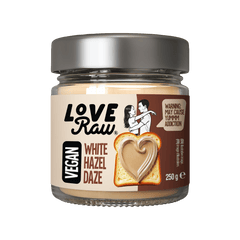Is Chocolate Vegan?
You may be a chocolate lover looking to go vegan, or a vegan on the hunt for answers, or someone who’s just plain curious to know – is chocolate vegan? Well, it all depends on how the chocolate is made. To help clear matters up for you and answer any related questions you have, we cover the following in this post:
- How is chocolate made?
- What’s the difference between vegan-friendly and non-vegan chocolate?
- Is dark chocolate vegan?
- Is cocoa powder vegan?
- Where can I find the best vegan chocolate?
If you’re looking for a more satisfying TL/DR answer about what’s safe to eat, you can rest easy knowing that vegan chocolate exists and can be just as delicious and irresistible as “chocolate” chocolate.
The Making of Chocolate
Like we said, how chocolate is made – because we all know there are different types of chocolate – helps you understand whether or not it's vegan. There are quite a few steps involved in the making of chocolate. So, to keep things simple, we’ve listed the key ones below:
1. Harvesting cocoa: The cacao tree, also known as Theobroma cacao, is at the heart of making chocolate. The fruit of this tree is known as cacao pods. Within each pod are roughly 40 seeds or cacao beans, and within each bean is the cacao nib used to make chocolate. When the cacao pods are ripe, they are harvested.
2. Fermenting: After the cacao pods are harvested, they are opened and the cacao beans are extracted. The beans are left to ferment to really help bring out their flavour. This can be for up to a week.
3. Drying and shipping: After fermenting, the beans must be left to dry under the sun. Once they have dried, they are shipped to the factories or chocolate brands or chocolate manufacturers.
4. Roasting and winnowing: During this process, cacao nibs are extracted from the cacao beans by roasting the beans and then winnowing them – a process that involves using air currents to remove the nib from its shell.
5. Making cocoa mass: Cacao nibs can make for a delicious treat, but chocolate factories often grind them into a type of chocolate liquor. Also known as cocoa mass, this is a mix of cocoa solids and cocoa butter. The chocolate liquor is blended with sweetener to make chocolate. Milk products may be added to enhance the taste, as well as other flavourings such as sea salt or hazelnut.
6. Conching: Crucial to developing the taste, texture, and smell of chocolate, this step involves churning the chocolate blend to bring out the flavour of the chocolate. How long it's churned for, and at what temperature, both play a role in the final flavour of the chocolate. Lecithin is often added towards the end of the stage to make the chocolate less viscous and easier to temper and mould.
7. Tempering and moulding: The final step to making chocolate – this involves slowly heating and cooling the chocolate in its mould so that it has a lovely glossy sheen and a smooth texture. When done well, it ensures the chocolate bar makes a great “snap” when broken. (If there’s a mistake, then it can result in chocolate bloom.)
You may be wondering what this has to do in terms of answering the question “is chocolate vegan”? The answer lies in steps 5 and 6, when additional ingredients are added to the chocolate liquor. The ingredients list tells the full story about whether a chocolate is vegan friendly or not.
What’s the difference between vegan-friendly and non-vegan chocolate?
During the process of making chocolate, additional ingredients are added to the chocolate liquor. This can result in different types of chocolate:
- Dark chocolate: Dark chocolate typically contains two ingredients – chocolate liquor (cacao solids and cacao butter) and sugar.
- Milk chocolate: The same as dark chocolate, though milk powder or products are added to the blend to change the flavour.
- White chocolate: Unlike the other two, this does not contain cacao solids, and is a mix of cacao butter, milk products, and sugar.
Of course, each comes with its own variations in terms of flavour.
So what is vegan chocolate? Unlike non-vegan chocolate, vegan chocolate does not use any animal products. So, for example, milk products may be replaced with plant-based milk – thereby making it an ideal choice for people who are lactose intolerant. If you are vegan and planning to pick up dairy-free chocolate products from supermarkets, make sure you check the list of ingredients. Bonus points if you find chocolate that’s fair trade – which means the farmers are paid a fair price for their hard work harvesting the cacao. (P.S. Some game-changing vegan chocolate brands make absolutely delicious chocolate, including milk chocolate and white chocolate!)
Is Dark Chocolate Vegan?
Yes and no. Sorry, we know that’s a less than satisfying answer! Most dark chocolate bars come with a cacao percentage, as it's their main ingredient. In general, the higher the percentage, the more likely it is a vegan dark chocolate. That being said, there are dark chocolates that contain non-vegan ingredients. Like we said, the best thing you can do is take a look at the list of ingredients. That or shop trusted vegan chocolate brands.
Is Cocoa Powder Vegan?
Yes. Cocoa powder is made from cacao nibs and is therefore entirely plant-based. The only caveat worth keeping in mind is that people often use cocoa powder to make hot chocolate, and the other main ingredient in hot chocolate is, you guessed it, milk or milk powder. So, as long as a plant-based or nut-based milk is used, that hot chocolate will be vegan-friendly too.















